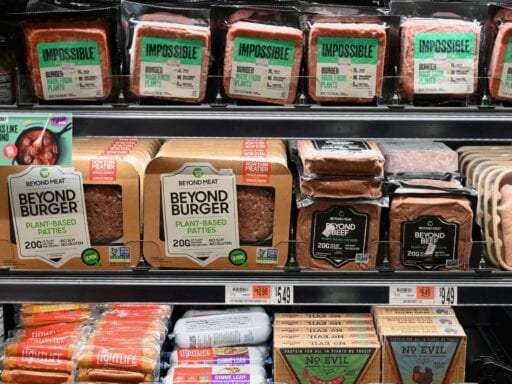Plant-based meat is coming to theme parks and cruises.
The latest place where you can buy a plant-based burger? The Magic Kingdom.
Disney announced Tuesday that it has partnered with Impossible Foods to serve Impossible plant-based meat at Disneyland in Anaheim, California, at Disney World in Orlando, Florida, and on the Disney Cruise Line.
Impossible Foods makes burgers that taste and cook like meat but are made from plant products instead of animals. They’re popular with customers who are avoiding meat for ethical or environmental reasons, but their goal is bigger: to win over carnivores, too, and make it viable for the world to grow much of its meat from plants.
This agreement with Disney is a big step toward that goal. While lots of Americans have tried Impossible Burgers, most haven’t, and the plant-based meat industry is still much, much smaller than the slaughtered-meat industry it aims to compete with. Deals with major food retailers are starting to change that. Last year, Burger King launched the Impossible Whopper, kicking off a wave of interest in plant-based meat products. Since then, Impossible Foods has signed deals with other big names such as Qdoba, while plant-based competitor Beyond Meat has partnered with brands including Subway, TGI Friday’s, Dunkin’, and McDonald’s.
Disney’s adoption of Impossible meat suggests that the events and tourism industries are joining major restaurants in promoting plant-based meat.
Can plant-based meat change the world?
Plant-based meat products aren’t just another tasty menu item. Proponents argue that they could solve most of the ethical and environmental problems associated with slaughtered meat. All around the world, many people like the taste of meat, and demand for meat products is growing. But conventional meat production can involve severe animal cruelty, promote antibiotic resistance and public health problems, and produce a lot of greenhouse gases.
Plant-based foods to the rescue! They don’t involve raising any animals on factory farms, they don’t use antibiotics, and in some cases they boast a vastly lower carbon footprint. An analysis of the latest Impossible Burger found that its carbon footprint is 89 percent smaller than a burger made from a cow. It also uses 87 percent less water and 96 percent less land. That’s an improvement from the first version of the Impossible Burger “1.0” — and Impossible Foods hopes it can slice the carbon footprint even more as it scales up its manufacturing.
That’s why Americans have been increasingly curious about meat alternatives that don’t require them to give up what they love about meat, namely the flavor and texture. The teams behind meat alternatives work to ensure their products have the flavor, macronutrient balance, and cooking experience of meat. The Impossible Burger famously bleeds like real beef, thanks to a meat protein called heme, which the company produces from yeast.
“Our guests have embraced our plant-based offerings at our parks around the globe, inspiring us to expand our menu,” Disney wrote this fall in announcing an expansion of plant-based options. With the Impossible partnership, it’s expanding the menu further — and giving even more Americans the chance to get a taste of plant-based eating.
Sign up for the Future Perfect newsletter and we’ll send you a roundup of ideas and solutions for tackling the world’s biggest challenges — and how to get better at doing good.
Future Perfect is funded in part by individual contributions, grants, and sponsorships. Learn more here.
Author: Kelsey Piper
Read More



